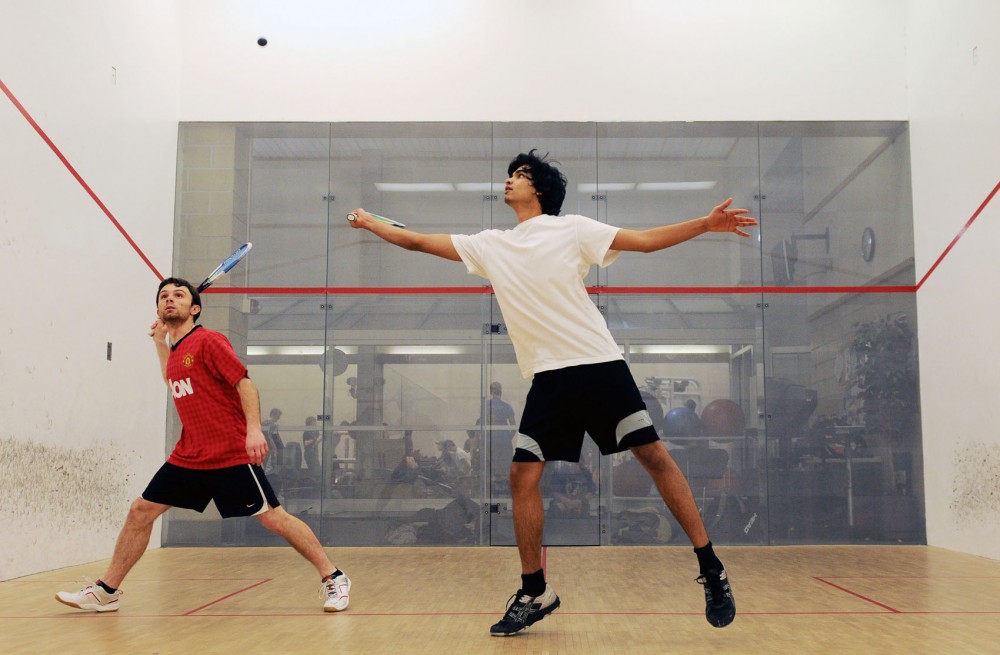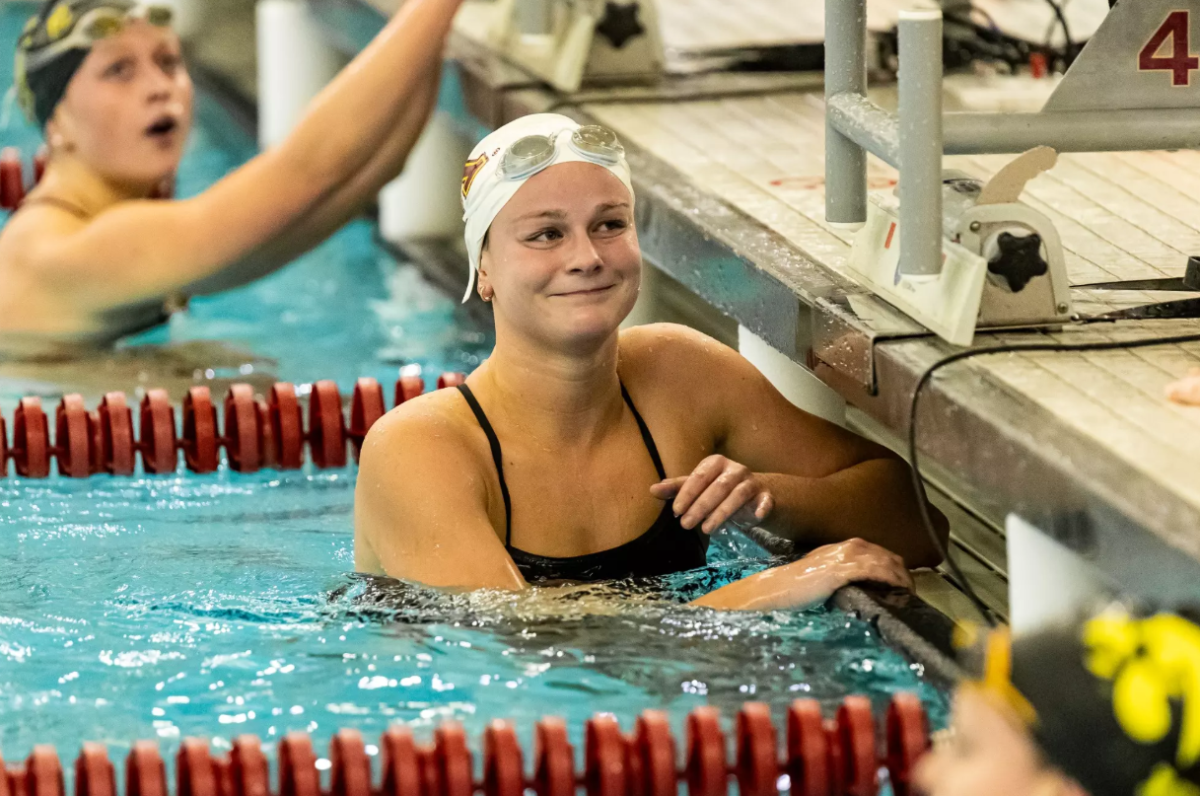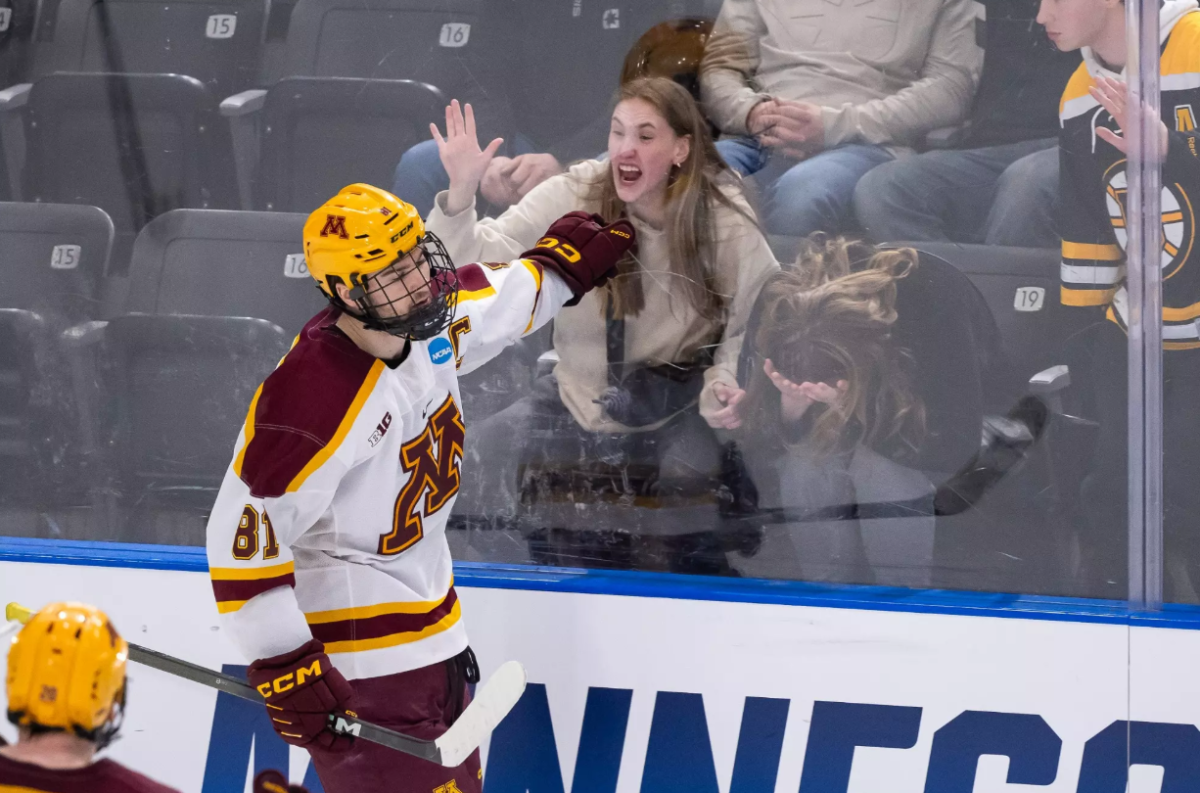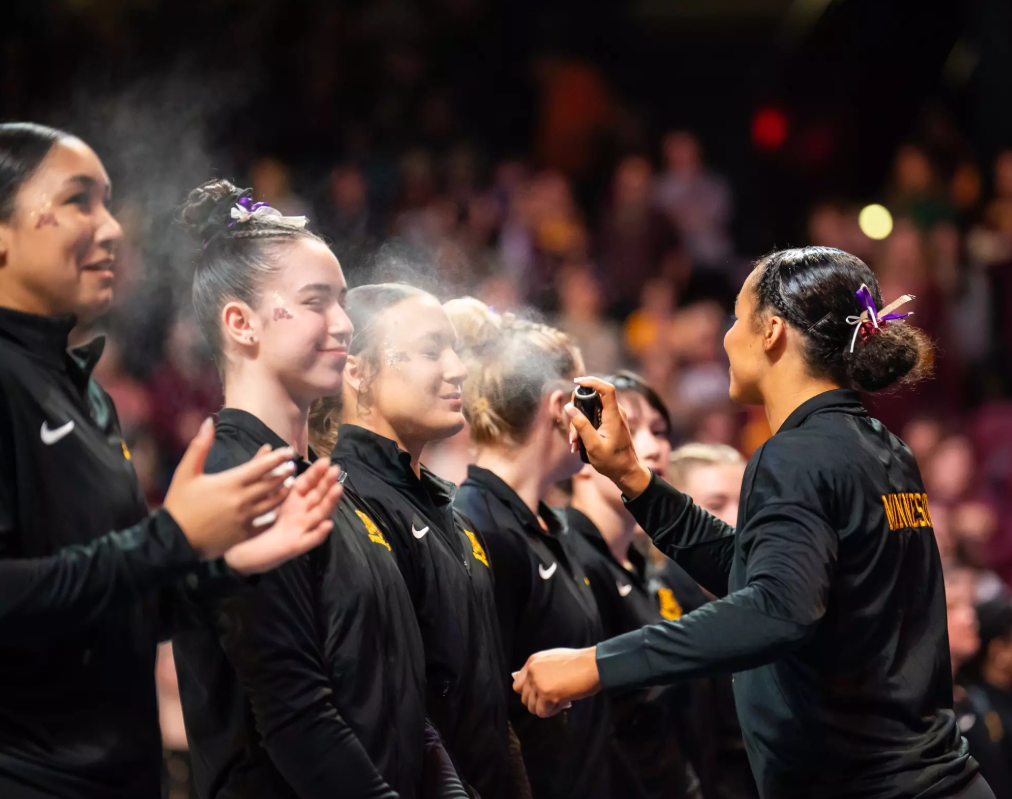Sophomore Tarun Nambiar was a highly ranked squash player as a young boy in India, but his squash career at the University of Minnesota began with a chance encounter.
Nambiar started playing squash when he was 7 but gave up the racquet sport at age 12 after his father’s work forced his family to relocate.
“Quitting squash is probably one of the biggest regrets of my life,” he said. “I still wish I had continued playing.”
Nambiar returned to squash in fall 2011 after a friend asked him to play squash at the University Recreation Center.
There, the two stumbled upon the University Squash Club and met John Stever, a longtime member of the club who also teaches squash classes at the University.
Stever recognized Nambiar’s talent and convinced him to join the club. That led to the formation of the University men’s and women’s squash teams, which have grown to about 20 members in less than two years.
Nambiar now captains the men’s team, which will compete in the 2013 College Squash Association National Team Championships at Yale University from Feb. 22-24.
While the University’s men’s and women’s teams are low in the collegiate squash rankings, they hope to increase the popularity of their relatively unheralded sport.
Squash is an indoor racquet sport that is popular throughout the world but not in the U.S.
“Here we have our own version — racquetball — so there’s not as many people playing [squash],” University women’s team captain Andrea Belgrade said.
About 30 American universities field varsity squash teams, but the U.S. does not have a strong junior program, Stever said.
“The U.S. is a backwater,” he said, “just the way we were when we started playing soccer.”
The result is that a lot of American squash players find the sport from different avenues.
Belgrade, a junior, is one of many who took a circuitous route to squash.
As a first-semester freshman, Belgrade needed one more credit to obtain her academic scholarship. Her adviser suggested she take a physical education class, so she took squash.
She liked the sport and the class’s teacher, Stever, so she started going to club time. She took Stever’s intermediate squash class the following semester.
Now, Belgrade is the top-rated player on the women’s squad, which will compete in the women’s national tournament at Yale this weekend.
She also plays on the men’s team and will compete with them at nationals.
Though Stever achieved his dream of forming a University squash team last year, the team’s roots had already been developed by the club.
But it wasn’t until fall 2011 that fielding a team became a real possibility.
With an influx of young, talented players like Nambiar, Stever jumped on the opportunity to form a team.
“It’d been an idea in the back of my head for a few years,” he said. “Last year, we just happened to have a group of undergraduates, mainly freshmen and sophomores, who already knew how to play squash, which is a little unusual for Minnesota.”
Both the men’s and women’s teams played in the national tournaments last season. The men’s team finished second in the Emerging Teams division and the women’s team finished third in the Emerging Teams division.
Stever grew the team even more this season but struggled to find enough matches because of the lack of squash teams in the Midwest.
In an effort to close the distance between schools, the University hosted a tournament in Madison, Wis., in early February. But bad weather forced one of the women’s opponents, Notre Dame, to withdraw.
The men’s team played eight matches this season and finished 4-4. By competing in at least eight matches, the team qualified for the nine-player division at the national tournament.
The women’s team finished 1-1.
While Stever seemed pleased with his team’s development this season, his hopes for the national tournament are realistic.
“Our program is so new … that, beyond the goal of just qualifying for the national tournament, [our goal] is to be competitive,” he said.
Stever is looking forward to the Recreation Center expansion, which will include four new squash courts for a total of nine and is set to open this fall. Stever said he’s hoping to host a tournament next fall with the extra court space.
His dream is for the University to have a show court where spectators can watch matches.
Stever would love for squash to eventually become a varsity sport at the University, but he also holds more practical long-term goals.
“Our more current goal would be to simply become one of the top teams in the Midwest,” he said, “and simply grow the interest and competitiveness of our team to be able to compete with a wider range of schools.”








